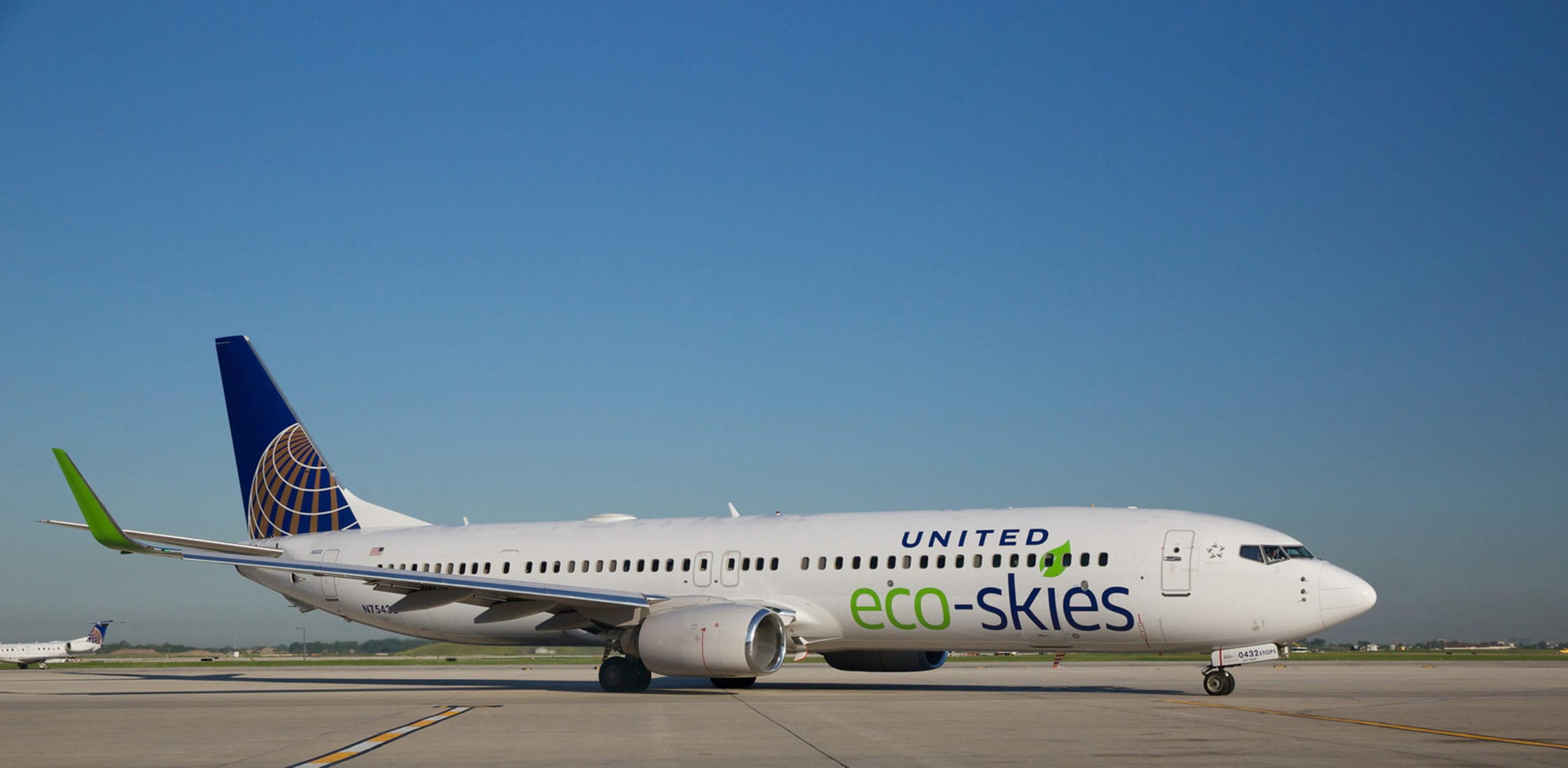Power Plants
Share
This article originally appeared in The Education Issue of APEX Experience.
About 20 miles southeast of Los Angeles International Airport (LAX), in Paramount, California, an idle portion of a petroleum refinery is in the final stages of a retrofit that will allow it to pump out 30 million gallons of low-carbon, renewable jet fuel a year. Slated to open in the first quarter of 2015, it’s the first commercial-scale biofuel refinery for Los Angeles-based AltAir Fuels. Adopting a process developed by Honeywell UOP, AltAir uses inedible or leftover vegetable oils and agricultural waste to make a fuel that’s 50 percent cleaner overall than Jet A or Jet A-1.
In 2011, United Airlines became the first American carrier to fly a commercial airplane on a blend of biofuel and regular jet fuel. The flight was remarkable because nothing happened, says Mihir Thakkar, the company’s environmental strategy and sustainability director. “It was a marker to push the industry forward,” he explains. In 2013, United entered into a purchase agreement with AltAir to buy 15 million gallons of their renewable fuel over three years – a move that helped their facility get off the ground. The carrier will use the green fuel to power select flights out of nearby LAX.
“It’s a drop in the bucket but it’s a great step forward,” Thakkar adds, noting that United consumes four billion gallons of fuel per year. Thanks to government incentives and inexpensive feedstock (the base biological material used to make the fuel), he confides that the biofuel is cost effective (within a few cents) or cost neutral when compared to traditional jet fuel.
With the price of crude in constant flux – a one-dollar increase can cost a carrier like United up to $400 million a year – airlines have long looked for safe, cost-competitive alternatives to traditional jet fuel. Spurred by aggressive industry targets for carbon-neutral growth by 2020 and a 50-percent reduction in greenhouse gas emissions by 2050, biofuel has emerged as the great hope to wean airlines off their dependence on fossil fuels. But experts say that deals like the one between United and AltAir, coupled with government support, are essential to getting the biojet industry off the ground.
“I’m more optimistic than a year ago,” says Dr. Bruno Miller, principal researcher at Metron Aviation, a company that offers air-traffic management products and services to the global airline industry. Starting in 2012, governments pulled back funding, which slowed down the certification process for certain biofuels, he notes. But in recent months, renewable aviation fuels seem to once again be in favor, with the US Departments of Agriculture and Energy and the US Navy banding together to offer certain biofuel producers $200 million to create production facilities. And in July 2014, the California Energy Commission awarded nearly $50 million to advanced biofuel production facilities – including $5 million to AltAir.
Lufthansa completed a series of commercial flights to study the long-term effects of biojet fuel on engines, noting no adverse results.
Even so, the main problem remains financing. Miller asks, “How do you finance the start of companies so they can build their own facilities? The technology has been proven; the access to capital has been fairly scarce. It’s a chicken-and-egg kind of thing – initial production was small, so when you hear reports that biofuel costs $20 [per] gallon, of course it’s expensive.”
Agreements between airlines and producers will help the industry scale, he says – a fact that many carriers seem to recognize. In August, Cathay Pacific announced a 10-year promise to buy 375 million gallons of biofuel from Fulcrum BioEnergy, which converts solid municipal waste into jet fuel, resulting in an 80-percent CO2-emissions reduction compared to fossil fuels. But Cathay isn’t just a buyer; like United, they are also an investor, tying their fate to Fulcrum’s. In the United Kingdom, British Airways brokered a similar deal with waste-to-fuels producer Solena Fuels, which will build a production plant in Essex called the GreenSky London facility. Brazilian airline GOL is following up several green demonstration flights undertaken during the World Cup with a commitment to run its 737s between São Paulo and Miami on a 10-percent blend of farnesane, a recently approved renewable jet fuel produced by Amyris, in partnership with French energy giant Total, from Brazil’s abundant sugarcane crop. And at the recent United Nations Climate Summit, KLM, too, announced its intention to partner with Amyris.
For Finnair, part of driving down the cost of biofuel also means building the infrastructure to support it. While airlines are currently only considering drop-in solutions – meaning fuels that can be blended with Jet A or Jet A-1 and used on existing airplane models – not all carriers have biorefineries near their major hubs. Says Kati Ihamäki, Finnair’s vice-president of sustainable development, “In Finland, for example, the refinery where biofuel can be made is not actually linked up to the wider aviation fuel delivery infrastructure. There’s a need to physically get more biofuel to airports, whether by using existing pipelines or trucks, or by building new infrastructure.” The company is currently exploring the idea of building a biofuel hub at Helsinki Airport – a pipeline that would deliver biofuel straight to HEL. “But this will move forward in 2015,” Ihamäki adds.
21 airlines have performed over 1,600 commercial passenger flights with blends of up to 50% biojet fuel from used cooking oil, jatropha, camelina and algae.
If momentum is on the rise, that’s because, unlike other transportation companies, airlines previously had little choice when it came to the type of fuel that powers its mode of transport – jets. While corn has been used for years to create ethanol as an additive to regular gasoline, this first-generation biofuel doesn’t meet the safety and performance standards necessary to propel airplane engines. Ethically and environmentally, it also poses well-documented problems that include displacing agricultural land and driving up the cost of food. The aviation industry is looking for biofuels to be sustainable from all points of view, Thakkar says. This includes using feedstocks that don’t eat up other resources, like land and water, and can be grown around the world in large quantities.
In the next five years, Miller thinks more airlines will jump on the biofuel bandwagon, driving down costs in the process. This will give the industry time to build up its supply and production capacity while using inexpensive feedstocks like waste. When these are depleted, the infrastructure around biofuels will allow companies to pursue more expensive feedstocks without impacting the market too much. But there are risks, Miller admits, and he fears that unless there’s even more support for renewable jet fuel, companies might use technology to make renewable diesel instead.
“You basically use the same process to make green diesel as you do biojet [fuel], but it costs a little less to produce. But by investing in these producers, like United and Cathay are doing, it helps tilt the balance in the favor of jet [fuel].”








